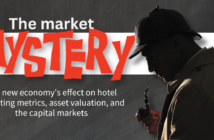Using marketing to convince lenders a financing transaction is worth their time and money
Commercial real estate is an inefficient and opaque business. Players are at all levels of sophistication, transaction sizes vary widely, and the value of an asset or loan is in the eye of the beholder. In other words, the person or committee writing the check ultimately determines a project’s viability and probability for success. Getting commercial real estate transactions done can be more of an art than science. As a result, commercial real estate business needs a way to bring efficiency to the table. That mechanism is a financing broker or intermediary who creates a unique micro-market for each financing deal.
PREPARING FOR SUCCESS
An expert intermediary will use all available data and facts surrounding a transaction to develop a narrative that convinces decision-makers this is the best use of their allocation of dollars. Like anything, money usually is the most constraining resource, with fewer dollars chasing many deals. This is why relationships and a knack for marketing can be key differentiators between an average deal that gets passed by and a great deal that gets to the closing table.
A great deal isn’t just one that’s harder to get done on the surface and executes smoothly; it’s also great because it gets done at better-than-market terms. This could be a combination of many things, including amortization, pre-payment penalty, recourse or non-recourse, amount of proceeds, and flexibility of who will service the loan. A good intermediary who follows a disciplined marketing process always is cognizant of getting the best terms for a client, and successfully checking as many boxes as possible.
UNDERSTANDING THE BIG PICTURE
A good marketing process needs to incorporate all available data points. This includes the asset’s most recent financial performance, as well as how the asset fared during tougher economic cycles. In other words, how did the asset (a hotel, for example) perform during both good and bad times? The process also must take into account the more subjective elements of an asset, such as current or future effects of any recent capital expenditures and improvement in revenue management. The intermediary then uses this analysis to identify and effectively demonstrate to lenders any upside for the asset’s financial performance.
Evaluating how an asset’s potential compares to its competitive set and the local market also is extremely important. If there are shortcomings in how the asset is performing, a good marketing process will output a convincing explanation that can bridge those gaps and present the management team, owners, and asset in the best light possible. This is an extremely important step in ensuring the best capital sources become interested in the deal.
Overcoming any negatives in the asset’s local market is another critical step in marketing a financing deal. These can include a high crime rate, low labor availability, asset being on a ground lease, or presence of labor unions. An effective marketing process will frontload these issues and provide sufficient mitigants to make the deal more financeable.
PACKAGING THE DEAL
The greater the institutional quality of an asset, the higher its chance of it getting financed by coveted capital sources such as life insurance companies or lower rate institutional balance-sheet debt funds. An intermediary can position a deal as institutional by preparing full-fledged offering materials, an effective financing memo, a complete financial model with valuation of the asset justified by different metrics and showcasing the quality of the management team, and a detailed track record of similar transactions. To garner interest in a transaction from hard-to-please sources such as credit unions, regional banks, and life-insurance companies, the deal must be marketed to demonstrate to a potential capital provider this sponsor is in it for the long game – that the borrower isn’t just interested in a one-and-done transaction. This incentivizes the capital source to spend more time and dig in deeper on a transaction because more will be coming down the pipeline.
Because capital sources have limited time to evaluate transactions, they will prioritize those with the highest probably of getting approved by their committee and the highest probability of producing a term sheet the sponsor will accept. This is where an effective marketing process conducted by a serious, experienced intermediary with proprietary knowledge, a proven track record, and deep relationships comes into play. The quality of the entity presenting the deal also reflects on the quality of the deal. As a result, the same deal presented by a lower level shop may not get as good a reception as it would being presented by a shop with superior relationships, superior track record, and superior structuring prowess.
Bottom line: How a deal is marketed is what gets deals to the closing table.





